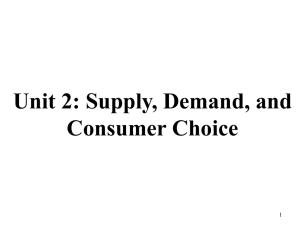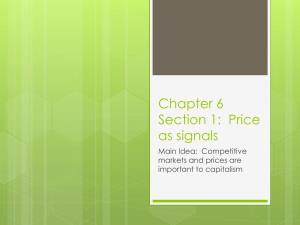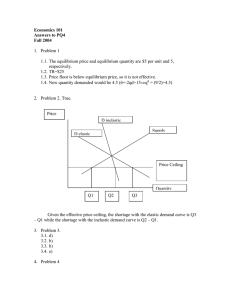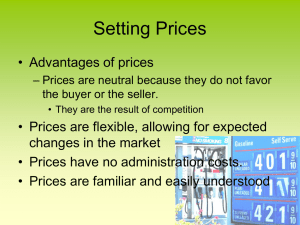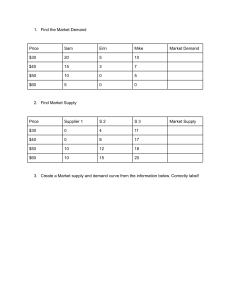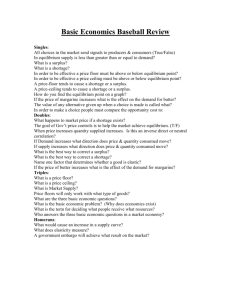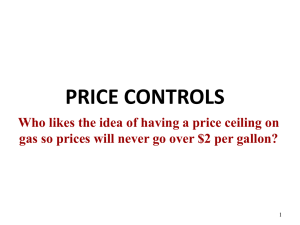Supply and demand in math form
advertisement
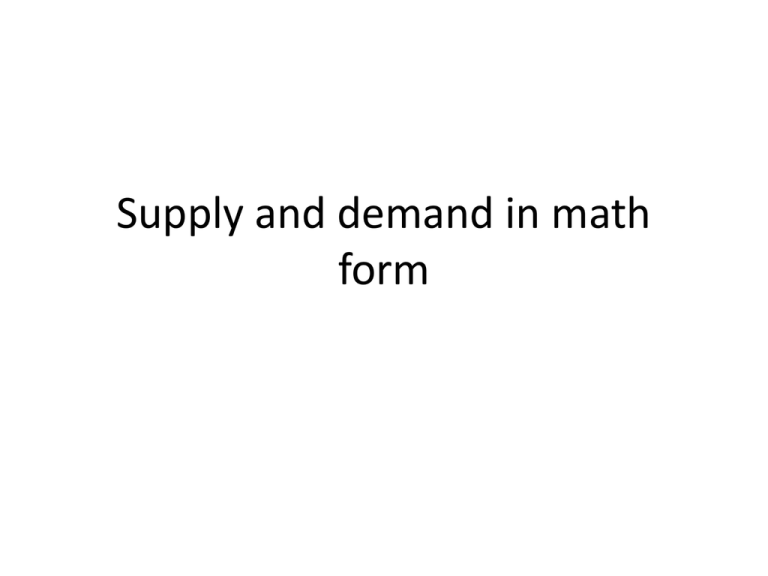
Supply and demand in math form Say in general demand is expressed as Qd = A – BP, where A and B are positive numbers. Supply would be expressed as Qs = C + DP where D is positive or zero and C could be any number. To find equilibrium in the market 1) Set Qd = QS to have A – BP = C + DP 2) Collect P terms on the right and non P terms of the left to have A – C = BP + DP 3) Rearrange to (B + D)P = A – C 4) Solve for P = (A – C)/(B + D) 5) Put this P into demand to get Q = A – B[(A – C)/(B + D)] or Q = A[(B + D)/(B + D)] - B[(A – C)/(B + D)] = [AD + BC]/(B + D) Looks like a big deal but not really – let’s put in numbers. Say demand is Qd = 18 – 2P and supply is Qs = -6 + 6P Then to get equilibrium set Qd = Qs, 18 – 2P = -6 + 6P, or 24 = 8P, or P = 24/8 = 3, Put P = 3 into demand to get Q = 18 – 6 = 12. (You could also put P = 3 into supply to see Q = 12). So the equilibrium P = 3 and equilibrium Q = 12. Note in our supply and demand graph we put P on the vertical axis, so we may want to put the equations as Demand P = (18/2) – (1/2)Qd Supply P = (6/6) + (1/6)Qs P 9 S 3 D 1 12 Note in our example if we had a price ceiling of 2 the Qd = 14 and Qs = 6 and so we would have a shortage of 8 units. A price ceiling of 4 would be mean Qd = 10 and Qs = 18. This would mean a surplus of 8 units and a surplus leads to a lower price. Price could fall with a ceiling it just can not go above. A price ceiling of 4 would not change the market equilibrium. If supply is vertical you can follow all the same basic procedures here.


